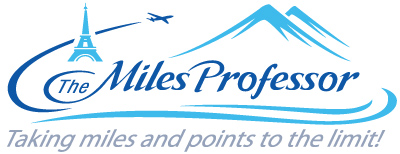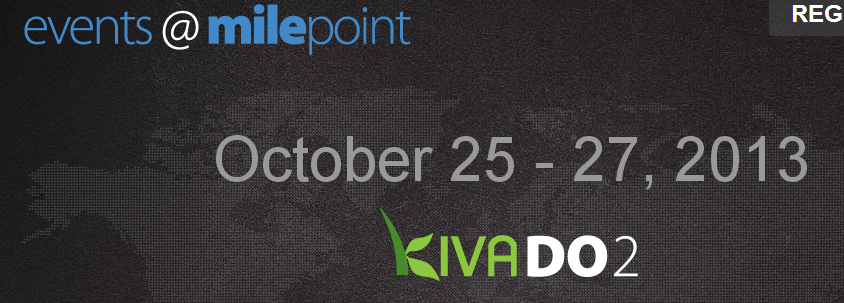Kiva Do 2013 and a $10,000 Kiva Loan Match
I use Kiva on a regular basis to earn miles and points for my travel. Kiva is a microlending organization allowing users to lend as little as $25 to entrepreneurs in mainly third world countries. The borrower or borrowing group then pays back the loan in a series of installments over a number of months on a previously specified repayment schedule. There is no interest paid by the borrower, but it is an opportunity to earn miles and points through your credit card spending while also helping small business entrepreneurship in third world countries.
The milepoint Kiva team is holding a Kiva Do 2013 in San Francisco. The event will be October 25 – 27 and will include talks by Kiva founder and other members of the organization. It will also be an opportunity to socialize with miles fanatics and enthusiastic Kiva lenders, including Randy Peterson himself. The milepoint Kiva team was formed in February 2011 by Team Captains Randy Petersen and Nils (nime01 on milepoint). There are currently 1949 members and $5,878,375 has been lent over the course of the two years. This makes us the #3 team on Kiva in terms of lifetime lending, an impressive feat considering our relatively small team size. The #1 and #2 team have 12,000 and 30,000 members.

The first Kiva Do was held in March 2012 and $400,000 was lent over the 48 hour period. With all our milestones, the weekend of Kiva Do 2013 is an excellent opportunity to build momentum for our team lending. I will personally be matching up to $10,000 total for loans made that weekend. I am sure the number of loans will far exceed that, but there’s only so much I can loan! While I unfortunately will not be able to make it to the Kiva Do 2013, I do hope everyone that goes enjoys “doing well by doing good.”
You can register for Kiva Do 2013 in San Francisco here.
You can join the milepoint Kiva team here.
You can also sign up for Kiva through my referral link here. We will each receive a free $25 to loan (which will not be repaid to us, but it’s free).
Loaning on Kiva:
There is much more in-depth analysis and discussion that can be done about Kiva, but I wanted to give a quick overview of the mechanics and how loans work and a few things to be mindful of.
Something to keep in mind is that this is money you’re floating and investing in Kiva for multiple months at a time. That is, only use funds that you have idly sitting around in a bank account that you won’t be needing for immediate expenses. You should also evaluate the miles you’ll earn through Kiva against other investment opportunities after a proper analysis. That is, if you can instead make a 401k contribution with company match, Kiva may not be the right way to go.
All transactions are processed through Paypal and Paypal actually waives its credit card fees for Kiva loans. This is Paypal’s way of helping out this charity organization. When a Kiva loan gets paid back, you can similarly withdraw the funds through Paypal and back into your bank account.

It’s important to keep in mind these loans are not risk-free. While the overall default rate for the site is about 1%, default rates do vary across the loans. If you choose loans with more reliable field partners and better ratings, you can achieve a much lower default rate. I have been on Kiva for about a year and a half at this point and have never had a single loan default. That is, my loss/default rate is 0%. But, of course, you have to choose the right loans for that. It is also possible to lose more than 1% so you do need to do your research and know what you’re doing.
You can find more information about the Kiva Do on the milepoint thread.



What an amazing gesture!
Thank you :)
Glad to bring $1,000 to Kiva…since I grew up across the street from Caltech I always wanted to learn from Caltech professors but alas was not smart enough…now I am following one!
I guess I sign up through your link…unfortunately I will be leaving Megado after arrival in SFO …but hope they come east (NYC area) and..perhaps I can help
Great! Welcome to the milepoint team :)
Do you use your US Bank FlexPerks card for Kiva loans? You had mentioned it once before as giving 3 points per dollar for charitable donations, but noticed you didn’t mention it in this post.
I do use it, yes! This was a quick post so I didn’t get into the full detail, but I will edit that it’s a good card to use and thanks for the reminder!
Kiva is a scam. Shame on you. Kiva borrowers pay 40-60% interest rates – all so that the microlenders can assure wealthy Kiva lenders ~99% “repayment” rates.
Paul, I’m not even a Kiva lender, but its quite possible that your comment is just a very broad derogatory statement that is mostly taken out of context. You left a lot of other information out, such as the size of a Kia borrowers loan (if someone needed $10 in the middle of the African rain forest, would you spend $11 to get them their $10?) and the also security costs (paid by the borrower) to securely loan funds to people in remote parts of the globe. Again, hopefully most TMP blog reader will have the sense to read between the lines.
The organization and the field partners are very transparent about their practices and returns so there is nothing hidden here. Unfortunately, many of the entrepeneurs on Kiva have poor credit and are high-risk individuals and far more than 1% of the loans will default. If the field partners did not charge interest, then most of the defaults would be passed on to us and, with a repayment rate of well below 99%, we’d stop lending. I think it’s great Kiva has managed to create a sustainable charity organization (which hinges on repaying us most of the capital we provide even though the underlying borrowers are quite likely to default) and reach so many this way. Of course, you personally should only participate in what you’re comfortable with :)
Screening applicants properly can’t be done for free, and if there were no interest, every person, viable business plan or no, would be out to get the free loans. In your society, interest rates such as you mention would be horrible. But to someone with no access to credit otherwise it can be a life changer. A woman who needs $100 to buy a sewing machine so she can make clothes for her family and crafts to sell to tourists doesn’t see a repayment of $150 a year later to be a scam, but rather a good investment on a changed life. (The specific example here is one I created, but I think typical of the kinds of situations Kiva works with.)
what do you do when borrowers are delinquent i lent money and never got repaid it feels more than 1 % would love to speak to you over the phone
I’m sorry to hear you haven’t had a good experience. It’s very important not to choose borrowers that have a high probability of defaulting. I only choose field partners with a very high rating (4 or higher) and no foreign exchange risk and have never had a single loan default. As I explained in the post, you do need to be careful, do your research and know what you’re doing in terms of taking on default risk. Other than avoiding bad loans, I don’t know of any recourse. I also don’t represent Kiva; I only use them to lend funds.